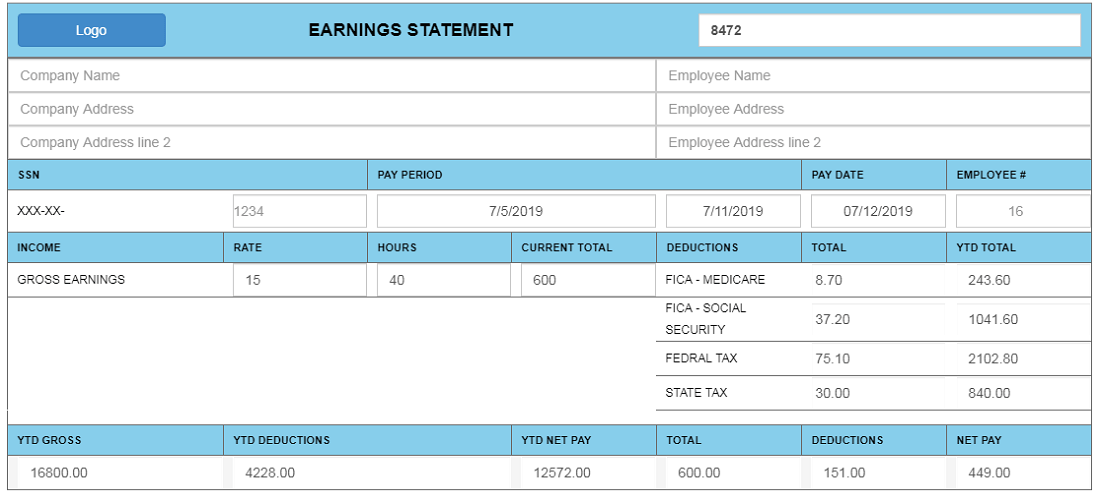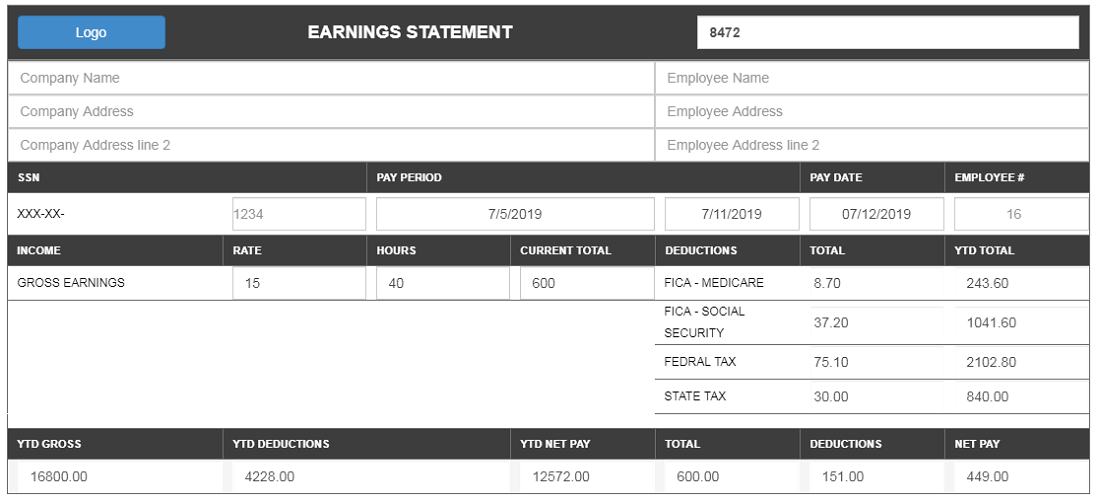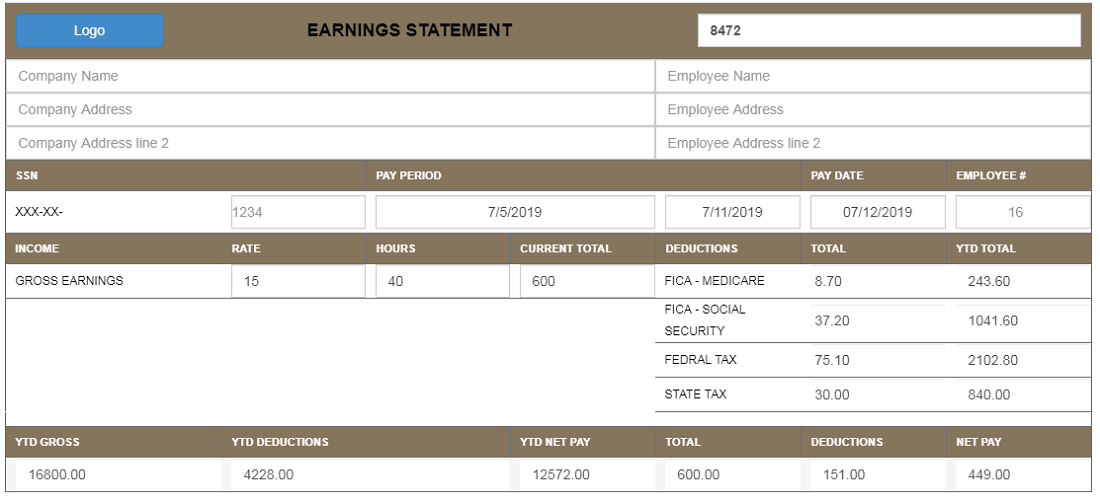A month-to-month lease agreement is a good option for tenants who:
• Are not sure how long they want to stay in a particular rental unit.
• Want the flexibility to move out at any time.
• Are on a temporary assignment or are in between jobs.
A month-to-month lease agreement can also be a good option for landlords who:
• Want to rent to tenants who are on a temporary assignment or are in between jobs.
• Do not want to commit to a long-term tenant..
• Want to be able to raise the rent at any time.
.
Sample Templates

SAMPLE

SAMPLE

SAMPLE

SAMPLE

SAMPLE

SAMPLE

SAMPLE
This is a sample paystub.
The watermark will be removed once you’ve made the payment.
Tips for negotiating a month-to-month lease agreement:
• Get everything in writing: Make sure that all of the terms of the agreement are in writing, including the rent, the security deposit, the notice period, and the landlord's and tenant's responsibilities.
• Negotiate the terms: Do not be afraid to negotiate the terms of the agreement. This includes the rent, the security deposit, and the notice period.
• Negotiate the terms: Do not be afraid to negotiate the terms of the agreement. This includes the rent, the security deposit, and the notice period.
A month-to-month lease agreement can be a good option for both landlords and tenants, but it is important to understand the terms of the agreement before you sign it.
A month-to-month lease agreement is a type of rental agreement that does not have a fixed end date. The tenancy automatically renews on a month-to-month basis unless either the landlord or the tenant gives proper notice to terminate the tenancy.
Key elements of a month-to-month lease agreement:
1. Parties: The agreement clearly identifies the landlord and the tenant, including their full names and addresses.
2. Property: The agreement specifies the property being leased, including its address, a brief description, and the permitted use of the property
3. Term: The agreement outlines the start date of the tenancy, the end date (if applicable), and whether the tenancy will automatically renew on a month-to-month basis.
4. Rent: The agreement clearly states the monthly rent amount, the due date for rent payments, and any applicable late fees.
5. Security Deposit: The agreement specifies the amount of the security deposit, the conditions under which it will be returned to the tenant, and how it will be held by the landlord.
6. Utilities: The agreement clarifies who is responsible for paying for utilities, such as electricity, water, and trash removal.
7. Maintenance: The agreement outlines the responsibilities of both the landlord and the tenant regarding maintenance of the property.
8. Pets: The agreement specifies whether pets are allowed, the amount of any pet deposit or pet rent, and any restrictions on pet ownership.
9. Subletting: The agreement clarifies whether subletting is allowed, the landlord's consent requirements for subletting, and any restrictions on subletting.
10. Termination: The agreement outlines the notice period required to terminate the tenancy and the valid reasons for termination.
11. Other Provisions: The agreement may include additional provisions, such as insurance requirements, how notices should be given, and a statement that the agreement constitutes the entire agreement between the parties.
12. Signatures: The agreement is signed by both the landlord and the tenant, and the date of signing is noted.
How a month-to-month lease agreement works in practice:
1. Initial Agreement: The landlord and tenant enter into the month-to-month lease agreement, agreeing to the terms and conditions outlined in the document.
2. Monthly Payments: The tenant makes monthly rent payments to the landlord, typically on the agreed-upon due date.
3. Automatic Renewal: If neither party provides notice to terminate the tenancy, the agreement automatically renews on a month-to-month basis.
4. Termination Notice: Either the landlord or the tenant can provide notice to terminate the tenancy, typically with a 30-day notice period.
5. Move-Out: Upon termination of the tenancy, the tenant vacates the property and returns the keys to the landlord.
6. Security Deposit Return: The landlord returns the security deposit to the tenant, minus any deductions for damages beyond normal wear and tear.
A month-to-month lease agreement provides flexibility for both landlords and tenants, allowing them to enter into a rental arrangement without a long-term commitment. However, it is crucial for both parties to understand their respective rights and responsibilities under the agreement to ensure a smooth and amicable rental experience.
Drawbacks of a month-to-month lease agreement:
• Uncertainty: The landlord can terminate the tenancy at any time, even if you are paying your rent on time. This can make it difficult to plan for the future.
• Potential for rent increases: The landlord can raise the rent at any time, even if you are on a month-to-month lease agreement.
• Difficulty finding housing: It can be more difficult to find a month-to-month rental unit than a fixed-term lease. Landlords often prefer to rent to tenants who are willing to commit to a longer term.













